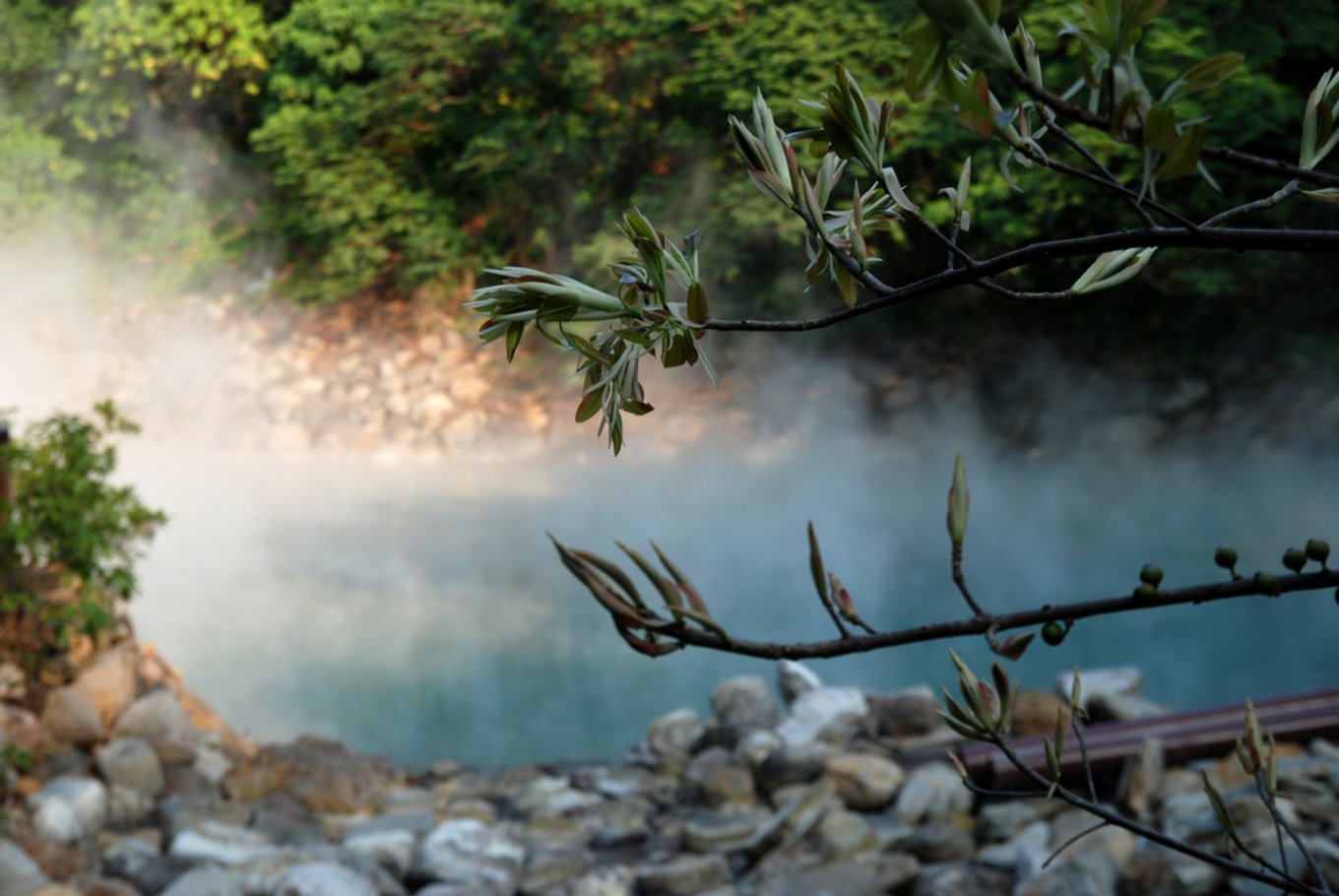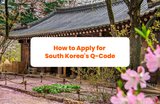Whilst Taiwan might be well known for its excellent hiking trails, beautiful coastline, and towering mountain ranges, little is known of Taiwan as a world class hot spring destination. With one of the highest concentrations and greatest varieties of thermal springs in the world, a trip to Taiwan would not be complete without at least dipping one’s toes into one of Taipei’s best hot springs, all within a short drive of the city.
Although there are references to hot springs dating back hundreds of years, little was known about these geothermal formations until the Japanese arrived in Taiwan in 1895. Only after the Japanese colonised the island did Taiwan’s hot spring culture develop, and new resort towns such as Beitou spring up to cope with the new-found demand.
Taiwan’s springs vary from steamy, sulphurous hot springs in Beitou, to the cold, but equally as relaxing natural springs at Su’ao on Taiwan’s east coast. Taiwan is even home to one of only three salt water hot springs in the world putting it in good company alongside Italy and Japan. In recent years there has been a resurgence in hot spring enthusiasm, with the activity gaining in popularity and once more becoming an integral part of Taiwanese culture.
There are a number of excellent hot spring resorts only a short distance from Taipei city centre, all of them easily reachable for a short half day, or one day trip.
Wulai - 烏來
Strictly speaking not in Taipei, but only a short 30 minutes bus ride south of the city is the small village of Wulai, famed for it’s hot springs and well-preserved aboriginal culture. Home to the Atayal tribe (泰雅族) the village takes its name from the Atayal phrase kilux ulay meaning ‘hot and poisonous’. As well as its hot springs, Wulai brings in visitors for its excellent hiking trails, birdwatching, gondola, waterfalls, and wild swimming.
According to local folklore, the village’s hot springs were discovered by a Atayal hunter around 300 years ago who spotted steam and bubbling water appearing from the ground whilst out hunting for game. Nowadays, visitors come from over over Taiwan to sample these hot springs, and with Wulai being the closest aboriginal village to Taipei, it makes for an interesting day trip from the city to sample the springs, and learn more about the Atayal tribe and their customs.
Besides its beautiful scenery and other natural attractions there is a small, but quite excellent museum – Wulai Ayatal Museum (entry free) – on the high street detailing more about the local Atayal tribe. The museum is run by a number of passionate and helpful volunteers, some of whom can speak English and explain more to you about Taiwan’s aboriginal culture. Nearby, lining the high street is a number of restaurants serving delicious locally sourced aboriginal produce such as stewed bamboo shoots, wild boar sausages, and a variety of berries and fruit. Shops selling local arts and crafts are also scattered throughout the village.
However, it’s the public hot springs which really draw visitors to Wulai. With ample space, and numerous bathing pools of differing temperatures, the springs occupy a peaceful spot next to the riverside making it an ideal place to have a soak before cooling off with a swim in the river. The public springs are free, and can be found on the opposite side of the river to the high street. Other options include private hot spring resorts. Some of these have been known to recycle spring water, and these should be avoided. However, others such as Volando Hot Spring Resort offer a chance to experience Wulai in more luxurious surroundings.
How to get there: Take bus 849 from outside Xindian MRT Station (NT$15). From Xindian a taxi will cost roughly NT$600 one way.
Beitou - 北投
A mountainous suburb just north of Taipei, and a 30 minute ride away on the MRT, Beitou’s host springs have been pulling in visitors since the Japanese were stationed here in the late 19th century. At one point Beitou was home to the largest hot spring resort in the whole of the Japanese empire and East Asia making it a cherished spot to both Japanese army officers and noble Taiwanese elites.
After falling into disrepair in the decades after the Japanese left Taiwan, in 1997 Beitou was connected to Taipei’s then expanding MRT transportation system, ushering in considerable sums of investment from outsiders keen to take advantage of the area’s natural hot spring resources. A number of luxury spas were constructed and the old Japanese infrastructure was brought back to life making Beitou a desirable place to visit once more.
The surrounding area to Beitou is home to a number of interesting attractions. Beitou’s iconic library which opened in 2006 is a must see for architectural enthusiasts as well as an ideal place to spend the afternoon taking in over 20,000 volumes of English and Chinese literature. The Thermal Valley and the Hot Spring Museum shed more light on the history of the hot springs and the details of the spring water which is said to have beneficial health effects for fertility, long-term illnesses and skin conditions.
The area now has literally dozens of luxury hot spring resorts to choose from located either side of the central park – some overpriced, and some more reasonable. However, for a more local and authentic experience head to the public hot springs (Millennium Hot Springs -新北投千禧湯露天溫泉) on Zhongshan Road. Here you can easily spend an afternoon chatting with the locals and soaking in the numerous pools with temperatures up to an almost scolding 45°C all for only NT$40.
How to get there: From anywhere in Taipei take the MRT red line to Beitou and change to take the one stop to Xinbeitou MRT.
Jinshan - 金山
A little further away from town on the other side of Yangmingshan National Park on Taiwan’s north coast is the small seaside village of Jinshan. The hot springs here are well know for their location right next to the ocean, meaning you can have a relaxing soak whilst also taking in the sea views of Taiwan’s rural northern coastline. Although the hot springs here have been enjoyed for decades if not centuries, only in recent years have new hot spring resorts and bath houses begun to appear, leading to the flourishing popularity of hot spring bathing in the district.
Along with excellent biking trails, Jinshan is also home to a quaint Old Street which is famed for its duck meat and other snacks. Furthermore, the proximity of Jinshan to other nearby places of interest make it the ideal hot spring resort to visit combined with a trip to nearby Yehliu, Keelung, Yangmingshan National Park, or even Jiufen.
How to get there: Take the short train ride from Taipei Main Station to Keelung and then take a local bus to Jinshan from the bus depot opposite Keelung train station.











![[Updated] Complete List Of Official Nationwide MCO SOP 2021](https://res.klook.com/image/upload/fl_lossy.progressive,q_85/c_fill,w_160,h_104/v1633858858/blog/iso56uzsphmdguixkvzh.jpg)





![[Updated] Complete List Of Official Nationwide MCO SOP 2021](https://res.klook.com/image/upload/fl_lossy.progressive,q_85/c_fill,w_410,h_264/v1633858858/blog/iso56uzsphmdguixkvzh.jpg)







